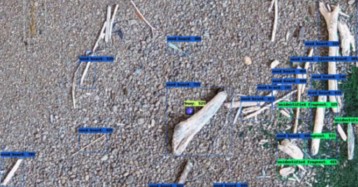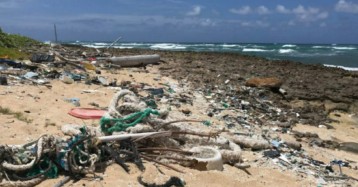Image Analysis, Artificial Intelligence, and Deep Learning
NCCOS analyzes imagery to characterize underwater habitats, from the species and substrate level, to large-scale ecological community. Imagery may be collected from remote sensing platforms such as uncrewed systems payloads, satellites, aircraft, vessels, or in situ by dive operations. Traditionally, analysts have manually interpreted the content of these imagery data sets to determine the types of benthic biological coverage (e.g., coral or seagrass) and substrate type (e.g., mud or sand), which is a time-intensive and subjective process. By incorporating machine and deep-learning annotation tools to update the workflow, automation techniques streamline the data analytics tasks, allowing analysts to concentrate on the critical steps of data interpretation and product development.
Mapping Coordination Automated Marine Debris Detections
NCCOS has deployed a web-based application that can be used to automatically detect individual macro marine debris objects from imagery along beaches. This application uses a deep learning–based object detection model to automate the analyses of images from a variety of sources (e.g., aerial, uncrewed aircraft system, or satellite) and locates, matches, and labels the detected marine debris to a series of categories. Debris density and distribution heat maps are generated from detection model results to provide accurate, timely intelligence for debris impact incident assessments and removal response.
Enhancing Habitat Mapping Accuracy and Efficiency Using Artificial Intelligence
Determining the most significant areas to map can be challenging. NCCOS has designed a participatory spatial prioritization process to provide critical information on “where” and “why” mapping data are needed and to promote mapping coordination, planning, and collaboration among multiple agencies. Planning between agencies and their partners will allow them to “map once, use many times,” ultimately reducing redundant efforts and maximizing the efficient use of resources.



